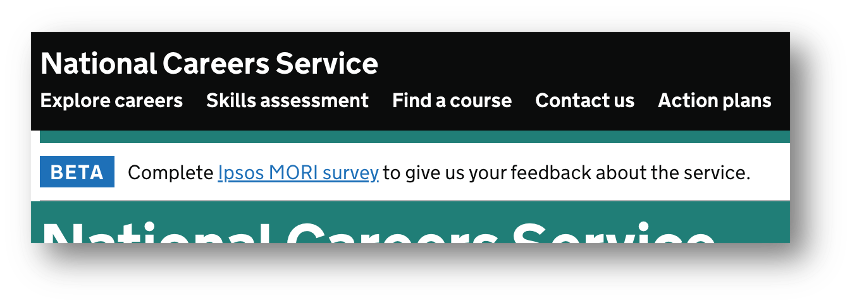Using a feedback survey
What is a survey and what are the benefits?
- a feedback survey is used for identifying or measuring the experience of users
- it helps uncover insights into products or services
- with a good survey design, you are more likely to receive higher response rates, completion rates, and therefore, more accurate data
Why use a survey?
- you can keep it running for an indefinite amount of time
- this will give residents an opportunity to provide their feedback on your website when it suits them
- you can look at responses over a stretch of time, spot trends and identify the most frustrating things for your users
- identifying key issues means your can direct your website improvement on areas that will have the most impact
- it gives users a chance to opt-in to research if you have the capacity to engage with them in the future
Best practice
- keep the survey short, concise and use plain language
- make it visible for site visitors (in accessible colours so those with visual impairments can use it too)
- for government websites the design patterns position the feedback banners at the top of the page
Visual examples from GOV.UK
Here are some examples of how the feedback call to action looks on a variety of government websites.




A template survey
As a part of the project funded by the Welsh Local Government Association we produced an example template for capturing feedback about the council tax service.
Tips for using the template on your service
- though the survey refers to ‘Council Tax’ this can be swapped out for any of your services to get feedback on those areas
- if you do change the service area, remember to change the options under question 3 so that it aligns
- you can also remove references to a service entirely, make it more generic and use it across your website end-to-end
- you will need somebody with web development skills to get the survey onto your website
- you may find “get feedback” guidance in the gov.uk service manual useful